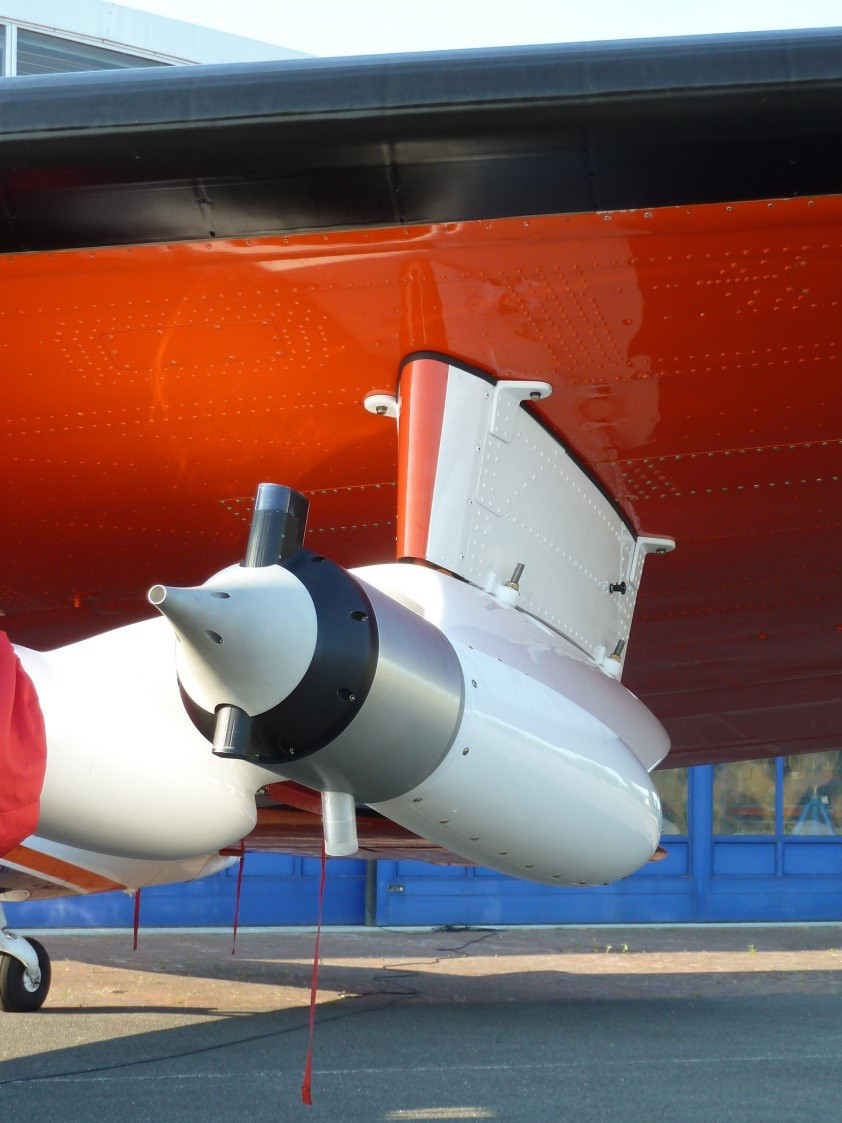

The Polar Nephelometer (PN) [Gayet et al., 1997] measures the angular scattering pattern (nonnormalized scattering phase function) of an ensemble of cloud particles (i.e., water droplets, ice crystals or a mixture of these particles) ranging from a few micrometers to approximately 1 mm in diameter. The measurements are performed at a wavelength of 0.8 μm with scattering angles ranging from ± 3.49° to ± 169.0° The cloud particles are streamed in a sampling tube equipped with a boundary layer trap. The particles (water droplets or ice crystals or a mixture of these particles) intersect a collimated high-energy laser beam (1 W, λ = 800 nm) at the focal point of a paraboloidal reflector. The scattered light is reflected onto a circular array of 54 detectors located in front of the mirror. Each detector senses signal corresponding to a range of scattering angles. Ten detectors (located in the forward direction: 3.49° to 10.6°; resolution : 0.79°) consist of optical fibers (1.5 mm diameter) which drive the light energy onto the photodiodes. The other 44 detectors are equipped with lenses which focus the light energy onto the active part of the photodiodes. The corresponding scattering angles are ranged from 15.0° to 169.0° (with a resolution of 7°). The measurements are independent of the airspeed in the sampling section. The data acquisition system is designed to provide a continuous sampling volume by integrating the measured signals of each of the detectors over a selected period. Direct measurement of the scattering phase function allows particle type (water droplets or ice crystals) to be distinguished and calculation of the optical parameters to be performed, i.e., the extinction coefficient and asymmetry parameter.
| Name | Polar Nephelometer |
| Measured species | Cloud particles (droplets and/or ice crystals) |
| Method | Scattering phase function (at a wavelength of 0.8 μm) is measured on 44 scattering angles from 3.49° to 169°. |
| Quantity primary | Scattering phase function |
| Quantity secondary | Extinction coefficient, asymmetry parameter, cloud particle phase recognition, cloud particle microphysical parameter after data inversion |
| Spectral range | Cloud particles in the diameter range 3 μm - 1 mm |
| Altitude range | Mounted on aircraft |
| Vertical resolution | Quasi-continuous |
| Temporal resolution | Sampling frequency: 1-1000 ms |
Gayet, J.-F., O. Crépel, J.-F. Fournol, and S. Oshchepkov (1997), A new airborne polar nephelometer for the measurements of optical and microphysical cloud properties: 1. Theoretical design, Ann. Geophys., 15, 451-459, doi:10.1007/s00585-997-0451-1.
Jourdan, O.; Mioche, G. ; Garrett, T.J. ; Schwarzenbök, A. ; Vidot, J. ; Xie, Y. ; Shcherbakov, V. N. ; Yang, P. ; Gayet, J.-F. (2010) Coupling of the microphysical and optical properties of an Arctic nimbostratus cloud during the ASTAR 2004 experiment: Implications for light-scattering modeling, J. Geophys. Res., Vol. 115 , No. D23 , D23206, DOI 10.1029/2010JD014016 (AGU)